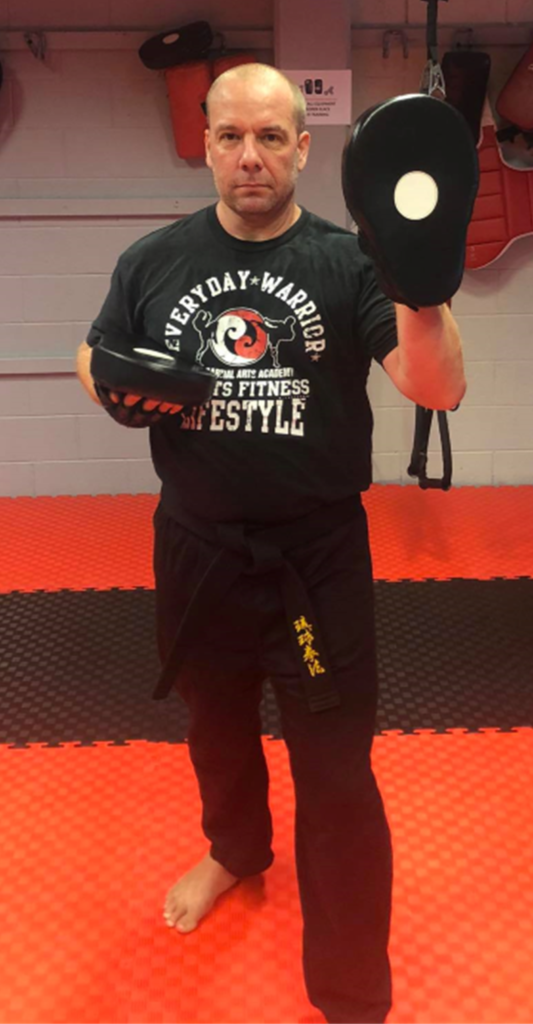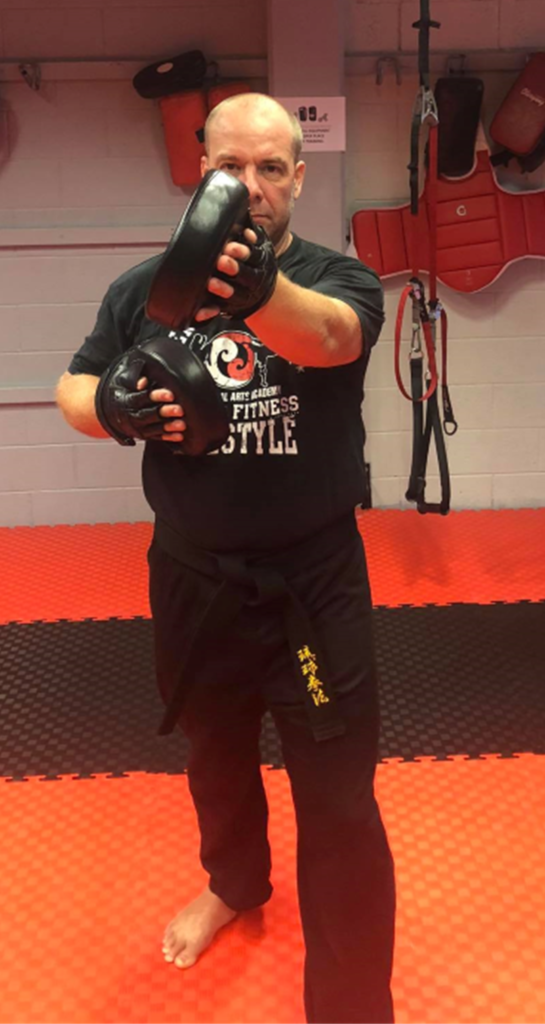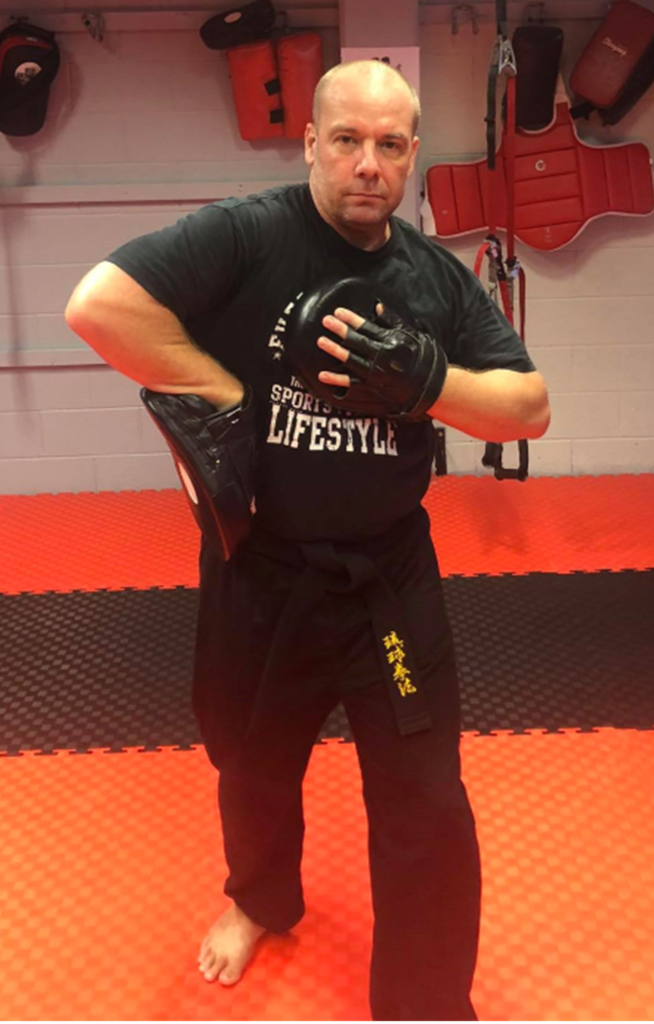Focus mitts, kick shields and Thai pads are three of the tools we can use to help students develop power, accuracy and understand motion.
Focus Mitts – For speed and learning
We have 13 basic positions for learning focus mitt combinations. Students begin by learning all 13 positions, then learn different strikes and sequences using these as a foundation.
Basic Positions
Position 1.
Straight push or triple strike.

Position 2.
Left strike to right target.
Unlike boxing, this is not a cross strike

Position 3.
Right strike to left target
Unlike boxing, this is not a cross strike

Position 4.
Diagonal-down strike.
Align the pad to the jaw line.

Position 5.
Diagonal-down strike
Align the pad to the jaw line.

Position 6.
Haymaker from left.
Stop with (Lazy ‘S’)

Position 7.
Haymaker from right.
Stop with Lazy ‘S’.

Position 8.
Left Floating Rib
Align to the floating rib for a left side strike.

Position 9.
Right Floating Rib
Align to the floating rib for a right side strike

Position 10.
Thigh for left kick.

Position 11.
Thigh for right kick

Position 12.
Far front kick
Pad extended for full length front kick

Position 13.
Knee
Pads braced for close knee

Combinations
After learning the basic positions, partners will develop striking combinations based on sequences of the 13 positions.
Combinations are made up of 2 or more positions in a sequence. The pad holder begins in a closed position, then opens the pads into the combinations sequence while moving and adjusting distance and timing, each set finishes in a closed position.
Example Combination
6, 1, 4, 13

Begin with a haymaker strike to the partners head.
Stop the strike using a Lazy ‘S’, counter to the neck

Follow with triple strike to the face – open or closed hand

Continue with a jaw-line diagonal-down slap

Finish with a close knee
2, 3, 4 and 5 Strike Coombinations
One of the easiest ways to explore striking combinations is by working through the sequence of paired, or tripled strikes.
We begin with a ‘1-1’ combination, then ‘1-2’, ‘1-3’, ‘1-4’… all the way up to ‘1-13’.
Then we go back and begin at ‘2-1’, then ‘2-2’, then ‘2-3’, ‘2-4’, ‘2-5’… to ‘2-13’
This pattern continues until we reach ’13-13′. This gives a total of 13×13 strikes, or 169 two strike combinations.
These do not have to be practiced in a single set. Why not pick a random number between 1 and 13, then practice all combinations for that number?
Moving to triple strikes, the concept is the same, begin at ‘1-1-1’, then go to ‘1-1-2’, ‘1-1-3’, ‘1-1-4′ and do on up to ’13-13-13’. This is a total of 13x13x13, or 2197 strikes.
It’s not practical to regularly practice almost 2200 strike combinations, so working a particular series where you know your strikes are weaker is valuable, or simply picking 3 random numbers and working out how they fit together is more practical.
Moving to 4 and 5 strike combinations is all about picking random numbers and working out how to make the sequence work. Once you have worked out a sequence, consider how it could be applied against different incoming attacks.
Thai Pads for Building Power
A variation to using the focus mitts is to perform the same drills using Thai pads allowing partners to practice and develop maximum power in each strike.
Once you’re familiar with the shapes, combinations and methods of these drills, replacing focus mitts with Thai pads takes this to a whole new level.
Connecting it with Kata
The final stage of pad training is to connect the sequences, combinations and skills with the motions of the kata you are studying.
Kata were never “just for show”, or “basic training”. Kata are dictionaries of life protection skills.
Many practitioners have forgotten how to analyse kata and interpret their meaning.
Taking your padwork across into your kata, or taking sequences of kata motion into padwork is a method of practice that will provide years of study.

